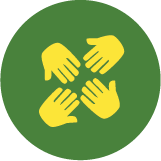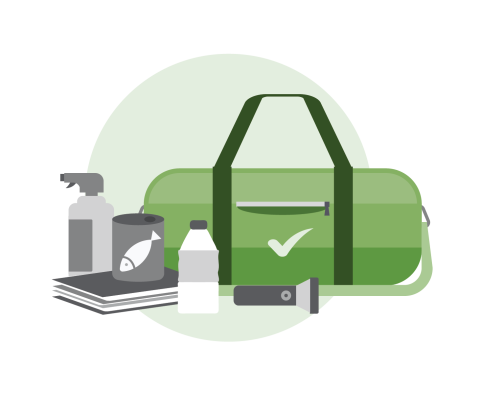
Being prepared for an emergency isn't just about staying safe during a storm or a disaster. It's also about how to stay comfortable, clean, fed, and healthy afterwards—when a storm or disaster may have knocked out electricity.
If you lost power, how would you eat? The refrigerator wouldn’t keep your food cold. The microwave couldn’t warm things up. You might not get clean water out of your faucets. How would you find out if it was safe to play outside? Not from your TV or computer!
If power is out, you also might not be able to go to the store or the bank. Being prepared means having your own food, water, cash, and other supplies to last for at least three days, and possibly longer if you are in a remote or hard-to-reach area.

Play the Build a Kit Game
You're on a mission--find what you need and build an emergency kit! Will you pick the correct items?
What should go in your kit?
Remember that your kit will depend on your own needs. Once you take a look at the basic items, consider what unique needs your family might have, such as supplies for pets or seniors. Use the list below to get started:

- Water—at least a gallon per person, per day
- Non-perishable food (such as dried fruit, peanut butter, or energy bars)
- First aid kit
- Cash
- Prescription medicines
- Extra batteries or an alternative power source
- Matches in a waterproof container (allow an adult to help)
- Toothbrush, toothpaste, soap
- Paper plates, plastic cups and utensils, paper towels
- Battery-powered or hand-cranked radio
- Sleeping bag or warm blanket for each person
- Flashlights
- Whistle to signal for help
- Can opener (manual)
- Local maps
- Pet and service animal supplies
- Baby supplies (formula, diapers, etc.)
- Extra pair of eyeglasses
Downloadable Resources
Find printable checklists and start building your kit today.
Emergency Checklist (Kids)
Emergency Checklist (Parents)

